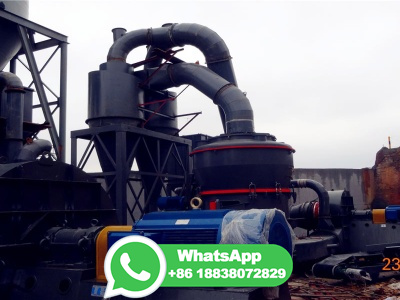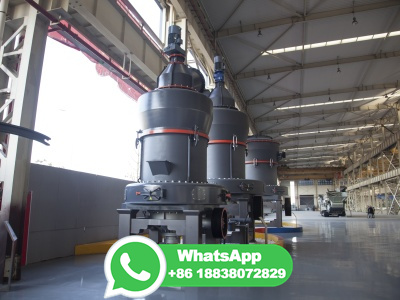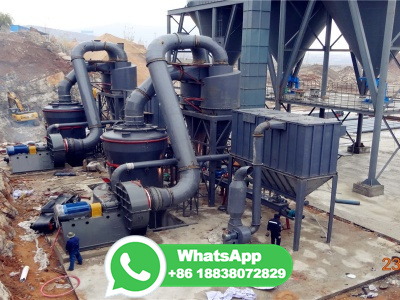
The Automobile . When the history of the automobile was heading in the direction of becoming the number one method of transportation. There was created a need for new fuels. In the nineteenth century, coal, gas, camphene, and kerosene made from petroleum were being used as fuels and in, automobile engines required fuels that needed petroleum as a raw material.
WhatsApp: +86 18203695377
Coal is a black or brownishblack sedimentary rock that can be burned for fuel and used to generate electricity. It is composed mostly of carbon and hydrocarbons, which contain energy that can be released through combustion (burning). Coal is the largest source of energy for generating electricity in the world, and the most abundant fossil fuel ...
WhatsApp: +86 18203695377
In this issue of Chem Catalysis, Liu, Zhu, and coworkers report such an integrated STG process for the direct conversion of syngas to gasoline and show that the selectivity of C 511 hydrocarbons is closely related to the catalystbed configuration. 9 As shown in Figure 1 A, at 573 K, the STD catalyst (CZA + Al 2 O 3) alone gives a % DME selectivity at % CO conversion but a trace ...
WhatsApp: +86 18203695377
But there are two flaws with turning coal into oil, beyond its cost. First, it takes a lot of energy to loosen up the carbon bonds in coal. Second, all that energy use results in the emission of a ...
WhatsApp: +86 18203695377
Researchers at Washington State University have made a significant breakthrough in understanding the Fischer Tropsch process, a key industrial method for converting coal, natural gas, or biomass into liquid fuels. Unlike many catalytic reactions that maintain a steady state, they found that the Fischer Tropsch process exhibits selfsustained oscillations, alternating between high and low ...
WhatsApp: +86 18203695377
Features of the Bureau of Mines Synthoil process for producing nonpolluting fuel from coal and pilot data on the hydroliquefaction of a Kentucky coal ( percent S, 17 percent ash) to a lowsulfur, lowash oil are presented. Authors: Yavorsky, P M; Akhtar, S; Friedman, S. Publication Date: Thu Mar 01 00:00:00 EST 1973. OSTI Identifier: .
WhatsApp: +86 18203695377
The total expenditure of energy in the world each year is about 3 × 10 17 kJ. 80% of this energy is provided by the combustion of fossil fuels: oil, coal, and natural gas (the sources of the energy consumed in the United States in 2019 are shown in Figure 2 ).
WhatsApp: +86 18203695377
This chapter explores the technologies, applications, barriers and research challenges associated with gasification and conversion of coal for the production of high efficiency power, transport fuels, and chemicals. It considers some of the emerging technologies which aim to reduce costs and emissions associated with coal use.
WhatsApp: +86 18203695377
Coal liquefaction is the process of converting solid coal into liquid fuel. This process has been developed as a means to utilize coal resources that are otherwise difficult to access and transport. The resulting liquid fuel, called synthetic crude oil, can be refined into a variety of fuels, including diesel, gasoline, and aviation fuel.
WhatsApp: +86 18203695377
The main technology being used is coal gasification instead of burning the fossil fuel, it is chemically transformed into synthetic natural gas (SNG). The process is decades old, but recent ...
WhatsApp: +86 18203695377
Coal gasification means the complete conversion of coal into gas using heterogeneous gas solid reactions. The main process is the reaction of the carbon of coal with steam, at pressures below 10 MPa and temperatures above 750°C, to form a "synthesis gas" containing mainly CO and H 2 with smaller amounts of CO 2 and CH 4, depending on ...
WhatsApp: +86 18203695377
August 15, 2008. A Texas company says that it has developed a cheaper and cleaner way to convert natural gas into gasoline and other liquid fuels, making it economical to tap naturalgas reserves ...
WhatsApp: +86 18203695377
The new procedure uses the sun's thermal energy to convert carbon dioxide and water directly into synthetic fuel. "This allows solar energy to be stored in the form of chemical bonds," explains ...
WhatsApp: +86 18203695377
The major problems he confronted and successfully solved were: (1) providing enough hydrogen gas to convert coal into synthetic petroleum, (2) working at the high pressures required for the conversion, and (3) regulating the reaction's temperature. ... Bergius's ultimate objective was to transform his smallscale coal conversion process into an ...
WhatsApp: +86 18203695377
The French engineer Eugene Jules Houdry () conducted experiments on the utilization of catalysts agents to improve the cracking process starting in 1925. In the United States he worked with Socony Vacuum Oil (1930) and then Sun Oil (1932). By using silica and aluminabased catalysts, he demonstrated that not only more gasoline could be produced from petroleum without the use of high ...
WhatsApp: +86 18203695377
The Adams Fork Energy project will convert regional coal into premiumgrade gasoline, producing 18,000 barrels per day (756,000 gallons US, million liters). When fully developed, the Adams ...
WhatsApp: +86 18203695377
TransGas develops projects that use wellproven clean coal gasification technology, chemical transformation of coal into nitrogenous fertilizer, liquid fuels and industrial gases. Our projects do not use traditional combustion or coal burning. We employ a 100year old German technology, with a lineage of over 500 gasifiers worldwide.
WhatsApp: +86 18203695377
option is to convert coal into high quality, clean burning transportation fuel. There are two commercially demonstrated routes for converting coal to transportation fuels through gasification (Figure 1). The widely known FischerTropsch process was first discovered in the 1920s. It has been commercially practiced by in several
WhatsApp: +86 18203695377
Here we report a highly efficient, stable and multifunctional NaFe 3 O 4 /HZSM5 catalyst, which can directly convert CO 2 to gasolinerange (C 5 C 11) hydrocarbons with selectivity up to 78 ...
WhatsApp: +86 18203695377
The facelift is part of a larger effort to move into the hydrogen era. The Fuel Cell ... the plant will convert from a coal to a naturalgas combinedcycle facility that can also burn hydrogen as ...
WhatsApp: +86 18203695377
Coaltoliquids (CTL): The conversion of coal to liquid fuels and/or chemicals. Coprocessing (of coal): The simultaneous conversion of coal and waste carbonaceous feedstocks such as petroleumbased residual oil or tar, plastics, or rubbers via oncethrough direct liquefaction into liquid, solid, and gaseous hydrocarbonaceous materials intended primarily for use as fuel
WhatsApp: +86 18203695377
Nitrogen goes through a process called water washing, which transforms it into ammonia, and that is turned into farm fertilizer. After distilling, converting, and treating the crude oil, it is blended to create the finished products that we recognize. Blends of several products help make sure that the gas or fuel is the same every time.
WhatsApp: +86 18203695377
Converting coal into gas and liquids. Coal can be turned into gases and liquids that can be used as fuels or processed into chemicals to make other products. These gases or liquids are sometimes called synthetic fuels or synfuels. Synthetic fuels are made by heating coal in large vessels. In North Dakota, the Great Plains Synfuels Plant ...
WhatsApp: +86 18203695377
The second plant at Louisiana, MO, was completed in 1950 and began full operation in 1951. Almost from day one, however, the 80barrel per day test facility was plagued by disintegration of the chemical catalysts used to convert the coal gas into liquid fuels. Only 40,000 gallons of liquid products were produced by the 5 million plant.
WhatsApp: +86 18203695377
Traditional, olderstyled pulverized coal power plants operate today with a typical efficiency of 30 to 35 percent, meaning if we start with 100 units of fuel coming into a power plant, we lose about twothirds of its energy content to waste heat, and only get onethird out in the form of electricity.
WhatsApp: +86 18203695377
In industrial chemistry, coal gasification is the process of producing syngas—a mixture consisting primarily of carbon monoxide (CO), hydrogen (H 2), carbon dioxide (CO 2), methane (CH 4), and water vapour (H 2 O)—from coal and water, air and/or oxygen.. Historically, coal was gasified to produce coal gas, also known as "town gas".Coal gas is combustible and was used for heating and ...
WhatsApp: +86 18203695377
Progress on converting methanol made from coal to gasoline by Mobil Oil Corp. is reviewed. Mobil's secret is a patented zeolite compound called ZSM5 that acts as a catalyst to promote the chemical change of methanol. Part of the Mobil process is to feed the compound and vaporized methanol into the bottom of the reactor chamber.
WhatsApp: +86 18203695377
Converting coal into gaseous and liquid fuels similar to petroleum products. Increasing the use of farm product biomass, such as corn, to produce ethanol. Reintroducing the use of tetraethyl lead to increase the octane rating of gasoline. Energy from Combustion Learn with flashcards, games, and more — for free.
WhatsApp: +86 18203695377
The FischerTropsch process (or FischerTropsch Synthesis) is a set of chemical reactions that convert a mixture of carbon monoxide and hydrogen into liquid process, a key component of gas to liquids technology, produces a petroleum substitute, typically from coal, natural gas, or biomass for use as synthetic lubrication oil and as synthetic fuel. [1]
WhatsApp: +86 18203695377
gasifier. (Show more) coal gasification, any process of converting coal into gas for use in illuminating and heating. The first illuminating gas was manufactured from coal in England in the late 18th century by the process of carbonization or destructive distillation, heating coal in the absence of air, leaving a residue of coke as a byproduct.
WhatsApp: +86 18203695377
Products of Coal. The following are the many valuable products generated by processing coal by heating in the absence of air: Coke, Coal Tar, and. Coal Gas. The process of rapidly heating coal in the absence of air is known as a destructive distillation of coal. When coal is burned in the presence of air, it burns primarily to create carbon ...
WhatsApp: +86 18203695377
kets coal must be converted into oil and gas. The conversion of coal into gas was an 24 by Neal P. Cochran established commercial technology in the as early as the 1820's. The "gas works" became a familiar feature of cities the Northeast and the Middle West, manufac turing gas from coal for illumination and cooking.
WhatsApp: +86 18203695377
Then, the gas is turned into a liquid that is used as fuel. This is done most often through the FischerTropsch process, which involves chemically refining the syngas to eliminate impurities, including sulfur and nitrogen, and converting it into either gasoline or diesel. This fuel is said to be cleaner than gasoline because it is sulfurfree.
WhatsApp: +86 18203695377